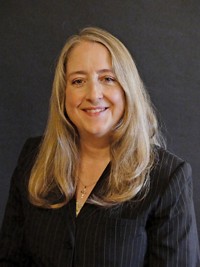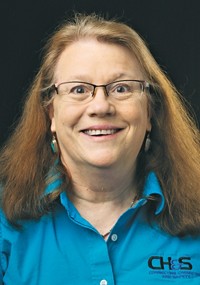Advertisement
Grab your lab coat. Let's get started
Welcome!
Welcome!
Create an account below to get 6 C&EN articles per month, receive newsletters and more - all free.
It seems this is your first time logging in online. Please enter the following information to continue.
As an ACS member you automatically get access to this site. All we need is few more details to create your reading experience.
Not you? Sign in with a different account.
Not you? Sign in with a different account.
ERROR 1
ERROR 1
ERROR 2
ERROR 2
ERROR 2
ERROR 2
ERROR 2
Password and Confirm password must match.
If you have an ACS member number, please enter it here so we can link this account to your membership. (optional)
ERROR 2
ACS values your privacy. By submitting your information, you are gaining access to C&EN and subscribing to our weekly newsletter. We use the information you provide to make your reading experience better, and we will never sell your data to third party members.
Comment
Building chemical safety partnerships
by Ralph Stuart, Chair, ACS Committee on Chemical Safety
June 22, 2019
| A version of this story appeared in
Volume 97, Issue 25

The American Chemical Society Strategic Plan recognizes safety as a core value of the society. To live out this value, in 2018 and 2019, the Committee on Chemical Safety (CCS) planned and held strategic ACS Safety Summits to explore the opportunities and challenges this value presents. Previous C&EN Comments by ACS immediate past president Peter Dorhout and ACS president Bonnie Charpentier have reported on the outcomes of these summits.
One of these outcomes has been the recognition that chemical safety presents a valuable opportunity for educating chemists, not only in technical skills related to prudent laboratory practices but also in professional skills such as critical thinking, ethical reasoning, and scientific communication. CCS recognizes the importance of building strategic partnerships across disciplines and communities to realize this opportunity. Through these partnerships, we can fulfill the vision of a graduating chemist with the technical and professional safety skills to contribute to the chemistry enterprise and society at large.
For this reason, we are actively developing working relationships with a variety of partners. Here are some examples from our 2019 Summit on Chemical Safety Education, which took place on March 1–2:
The planning committee for the 2019 summit included representatives from several ACS groups, including the Committee on Corporation Associates, the Committee on Professional Training, the Division of Chemical Health and Safety (CHAS), the Division of Chemical Education’s Safety Committee, and the Society Committee on Education.
The summit included representatives from several external groups, including the Consumer Product Safety Commission, the National Science Teachers Association, the Technical University of Kenya, the National Science Foundation, and Sandia National Laboratories’ Global Chemical and Biological Security program, as well as staff from several ACS offices.
Complete results of the summit will be reported at a symposium organized by the Division of Chemical Education at the ACS national meeting in San Diego.
Many of the projects proposed during the summits are already well underway. For example, the 2018 summit identified safety education, organizational partnerships, safety outreach, and safety information as key opportunities to explore. To further these goals and celebrate the International Year of the Periodic Table, the CCS Communications Subcommittee partnered with Princeton University’s Office of Environmental Health and Safety and CHAS to develop an evolving Periodic Table of the Elements of Safety. You can download the table and its support materials from the CHAS website at dchas.org/2019/03/13/periodic-table-of-ehs-elements. This periodic table organizes information related to chemical safety and may be used as an educational, informational, and outreach tool to help spread awareness of both technical and cultural aspects of the landscape of chemical safety.
CCS partners with other ACS groups for more than work on the safety summits. We work closely with CHAS, the Division of Chemical Education, and the Division of Chemical Information on a regular basis. One example of these partnerships is the work of the CCS Safety Advisory Panel (SAP), an environmental health and safety resource for addressing emerging chemical safety and regulatory issues. SAP includes members of these technical divisions, as well as external experts, who are currently working on several projects. These projects include the development of a template for analyzing the safety of undergraduate organic teaching laboratories and a keyword vocabulary for indexing chemical safety resources for easy discovery and retrieval. The template development is supported by an Innovative Project Grant from the ACS Committee on Divisional Activities.
Our work is also supported by the ACS Office of Safety Programs, which actively connects us with other ACS programs, including the ACS Green Chemistry Institute and the Graduate Education Advisory Board, to advance important initiatives that support the mission of both groups. Examples of these initiatives include technical programming at the 2019 Green Chemistry and Engineering Conference and laboratory safety team workshops for graduate students at national meetings.
Given these many moving pieces, CCS leadership is planning a 2019 strategic planning effort for its internal operations to ensure that we can be as effective as possible in using the time and expertise that committee members volunteer to the society. We expect that this CCS strategic plan will inform our work from 2020 to 2025, as well as future summits that we expect to host in that time frame.
As we prepare for our strategic planning work, we appreciate ideas and suggestions you may have about how CCS can champion ideas that will help you improve the safety aspects of your chemistry. Please share these ideas with us via email at safety@acs.org.
Views expressed are those of the author and not necessarily those of C&EN or ACS.





Join the conversation
Contact the reporter
Submit a Letter to the Editor for publication
Engage with us on Twitter